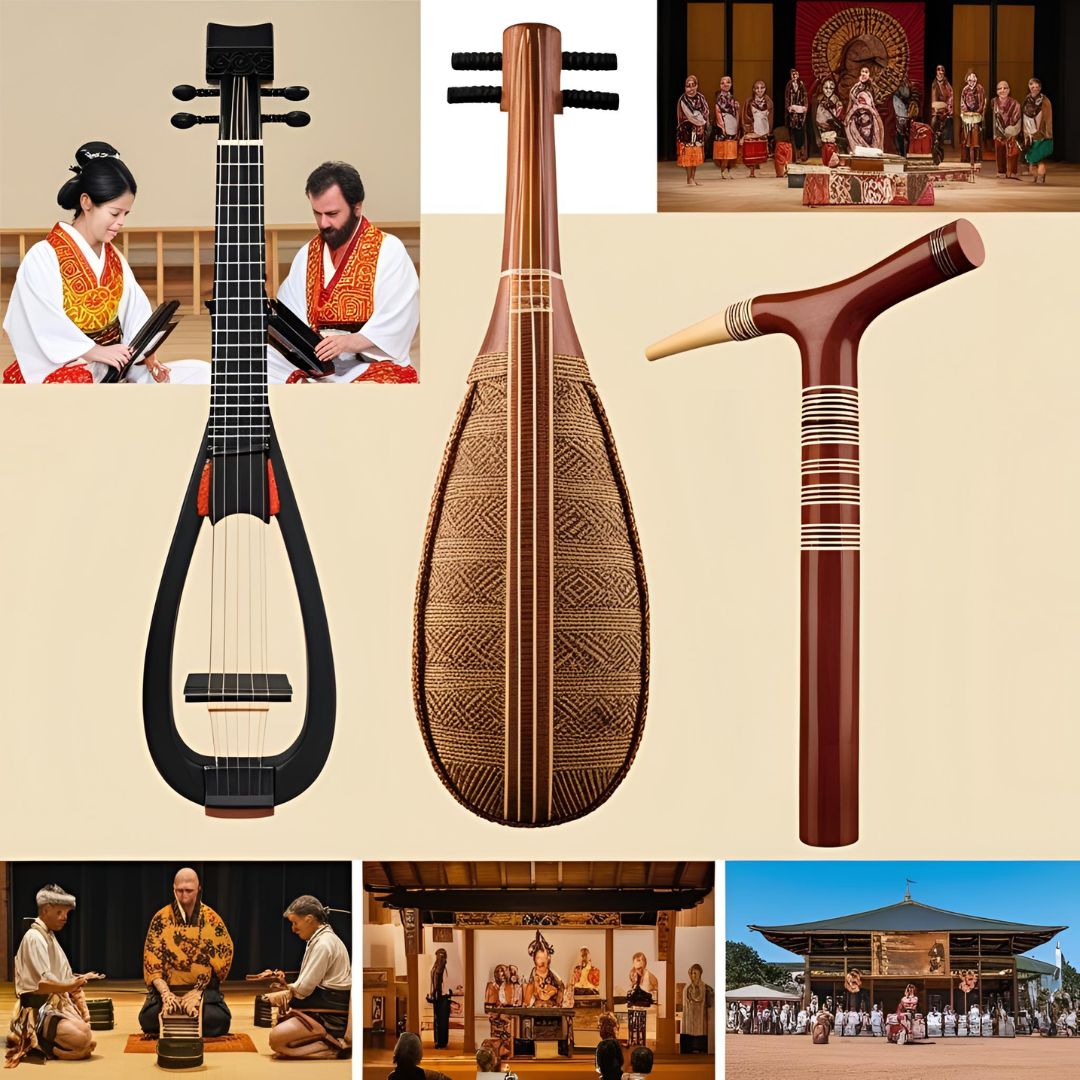Music has the power to cross borders and unite cultures. Throughout history, various exotic instruments have become symbols of their regions of origin, carrying not only unique sounds but also deep stories and traditions that go far beyond the notes they produce. From soft melodies to deeply spiritual sounds, instruments such as the Japanese shamisen, the Armenian duduk, and the Australian didgeridoo transcend geographical and cultural limits, bringing out the character and soul of different peoples. This post explores these instruments and their importance in the global music scene.
Japanese Shamisen: The Spirit of Japanese Tradition
The shamisen is a traditional Japanese string instrument with an unmistakable sound that is rich in history. With three strings and a resonating body made of wood covered with skin, the shamisen is played with a plectrum called “bachi.” Its origins trace back to the 16th century, when it was introduced to Japan from China, but it quickly became an integral part of Japanese culture, especially in kabuki theater and bunraku performances, as well as other traditional music presentations.
The sound of the shamisen is characterized by a strong, vibrant, and sometimes melancholic tone, ideal for expressing intense emotions. The depth of its sound reflects Japanese culture, with a strong connection to nature and human emotions. For the Japanese, the shamisen is not just an instrument, but a form of artistic expression that connects people to their cultural and spiritual past.
Moreover, the shamisen plays a key role in traditional ceremonies, performances, and even popular festivals. Its sound serves as a storytelling tool, conveying feelings that are often difficult to express with words alone.
Armenian Duduk: The Voice of the Armenian Soul
The duduk is a traditional wind instrument from Armenia, known for its soft and penetrating sound that evokes deep feelings of nostalgia and melancholy. Made from plum wood and featuring a double-reed mouthpiece, the duduk produces notes that directly touch the listener’s soul. Its unique sound is often associated with moments of introspection and reflection.
The history of the duduk dates back thousands of years and has been an integral part of Armenian culture since ancient times. Traditionally, it was used in religious ceremonies, folk celebrations, and even shamanic rituals. Its cultural significance is so profound that the duduk was included in UNESCO’s Intangible Cultural Heritage list.
The sound of the duduk is deep and resonant, and its ability to evoke emotions is extraordinary. In performances, the duduk is often accompanied by other instruments, such as percussion and drums, creating an atmosphere of harmony that unites musicians and listeners in an intense sensory experience. Even outside Armenia, the duduk has been adopted by musicians from around the world, expanding its influence and demonstrating its versatility.
Australian Didgeridoo: The Ancestral Sound of the Land
The didgeridoo is one of the world’s oldest instruments, used by the Aboriginal people of Australia for over 1,500 years. This wind instrument, typically made from hollow eucalyptus wood, has a deep, vibrant, and mysterious sound that is both hypnotic and meditative. The playing technique involves circular breathing, allowing the musician to maintain a continuous sound for long periods, creating a trance-like atmosphere.
The didgeridoo is not just a musical instrument but also a ritualistic object deeply connected to the spiritual and cultural beliefs of the Aboriginal people. In many Aboriginal cultures, the didgeridoo is seen as a means of communication with the ancestors and the spiritual world. It is played during sacred ceremonies, traditional dances, and healing rituals.
The sound of the didgeridoo, with its deep and repetitive vibrations, is often associated with nature and the cycles of the earth. Its sound evokes images of vast, wild Australian landscapes. Even outside of Australia, the didgeridoo has gained popularity worldwide, being used in various musical genres and sound experiments.
The Cultural Importance of These Instruments in the Global Music Scene
Each of these instruments — the shamisen, the duduk, and the didgeridoo — carries the identity and history of its people, being more than mere sound objects. They are the cultural and spiritual expression of their regions and have played key roles in local musical traditions. Over time, these instruments have not only enriched their cultures of origin but have also made significant contributions to the global music scene.
In the present context, these instruments continue to play a vital role in preserving and transmitting cultural traditions. They have become popular in various parts of the world, being incorporated into different musical genres and even used in innovative fusions with modern sounds. The globalization of music has allowed the sounds of the shamisen, duduk, and didgeridoo to transcend borders, connecting with audiences worldwide and creating a network of sounds that celebrates cultural diversity.





